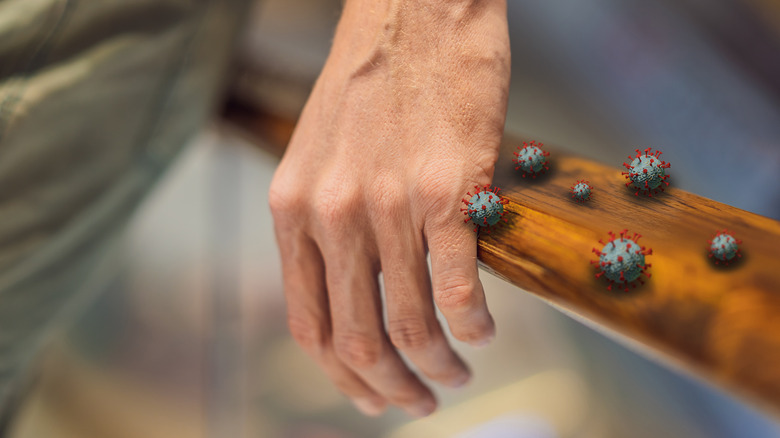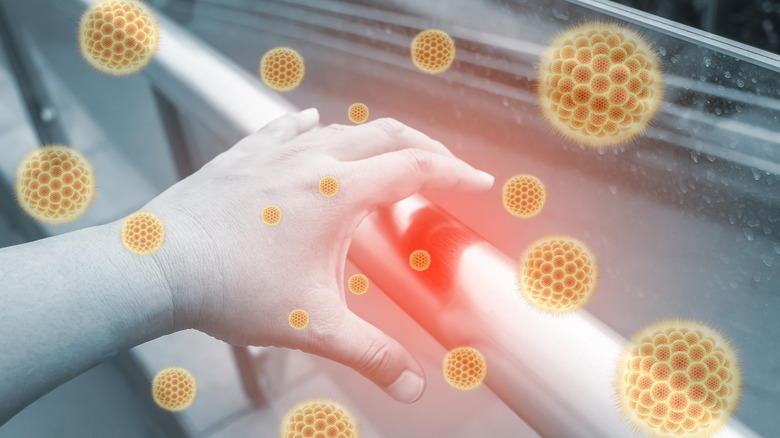The Rate At Which Germs Multiply May Surprise You
As we go about our daily lives, it's not hard to forget about the existence of life that is lurking right underneath our noses — germs. Also known as microorganisms, MedlinePlus explains that germs are so tiny that they can only be seen when looking through a microscope. Bacteria are so microscopic that they could fit across the end of a pencil eraser if you lined a thousand of them up, according to the Mayo Clinic. It can be intimidating to learn that these organisms live all around us. They exist in the air, on the ground, in water, and even on and inside our bodies. Germs can be found on almost any surface that you come across, yet many of them won't cause you any harm.
Some germs can actually be beneficial for us, such as certain bacteria. As illustrated by the ReAct Group, there are hundreds of bacteria and microbes inside our bodies, which are classified as the human microbiota. These microbes serve a number of essential functions to us, such as breaking down the food we consume and supplying us with nutrients.
However, some germs are not as friendly to humans. The Mayo Clinic reports that some germs, such as viruses, can contribute to the development of diseases. A few examples of these diseases include the common cold, AIDS, influenza, chickenpox, and COVID-19.
Because some germs can be dangerous to our health, it's important for researchers to examine how quickly they can multiply.
How fast do germs multiply?
It's only natural for germs to want to make more of themselves, just like any other cell or living creature. To do just that, they can divide and multiply through a process called cell division, as described by the Massachusetts Institute of Technology. During this process, a single bacterium will rearrange its DNA, as well as other molecules, before splitting into two cells. Unlike humans who have to wait patiently for months to bring another living being into the world, germs can actually multiply extremely quickly. In fact, the Pacific Northwest National Library reports that bacteria are one of the fastest reproducing organisms to exist.
According to Harvard University, Escherichia coli (E. coli) which is a bacterium that can lead to gastrointestinal illness, can divide in as little as 20 minutes if its environmental conditions are suitable enough. When divided, the population of E. coli can grow substantially and can have a noticeable impact, such as forming dental plaque. Harvard University explains that there must be over a million bacteria to have such a visible effect, but that it takes approximately 8 hours for the division to take place when conditions are appropriate for E. coli.


